Last week was an unmitigated disaster for Australian housing affordability.
On Tuesday, the Australian Bureau of Statistics (ABS) released data on dwelling approvals, which showed that the number of homes approved for construction is falling badly behind the government’s target to build 1.2 million homes over five years, which requires 240,000 homes to be built annually.
In the first 14 months of the National Housing Accord, 218,300 dwellings were approved, 61,700 (22%) fewer than the target of 280,000 dwellings.
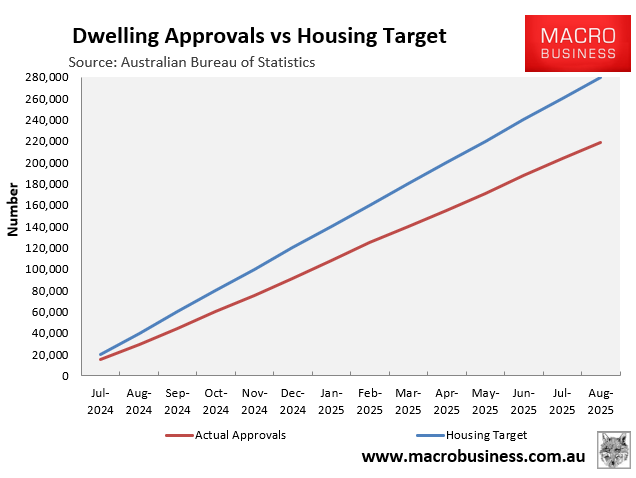
It is also important to note that only around 95% of approvals ultimately result in construction, so the target is actually even further behind.
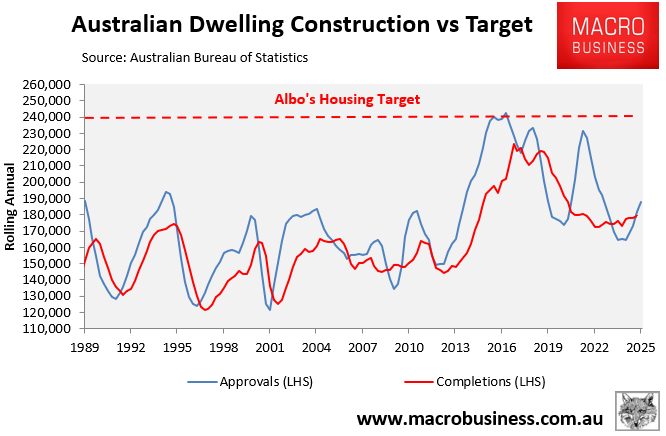
Then on Wednesday, Cotality released its house price and rent results for September, which showed that housing affordability is worsening fast.
House Prices:
Cotality reported that dwelling values across the combined capital cities rose by 0.9% in September to a fresh record high, the fastest monthly growth in two years.
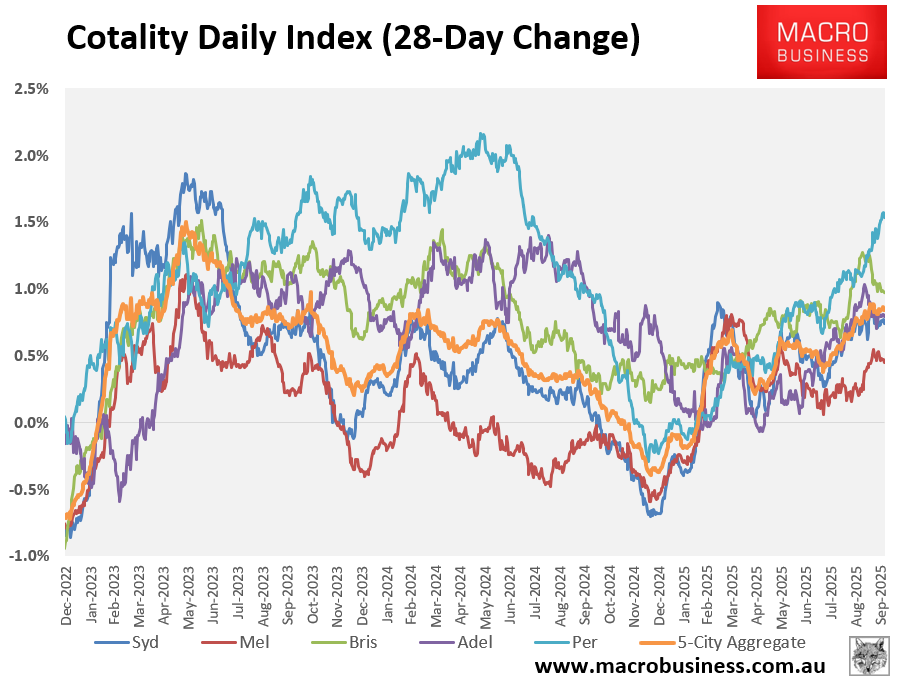
Auction clearance rates are tracking at their highest rate in two years.
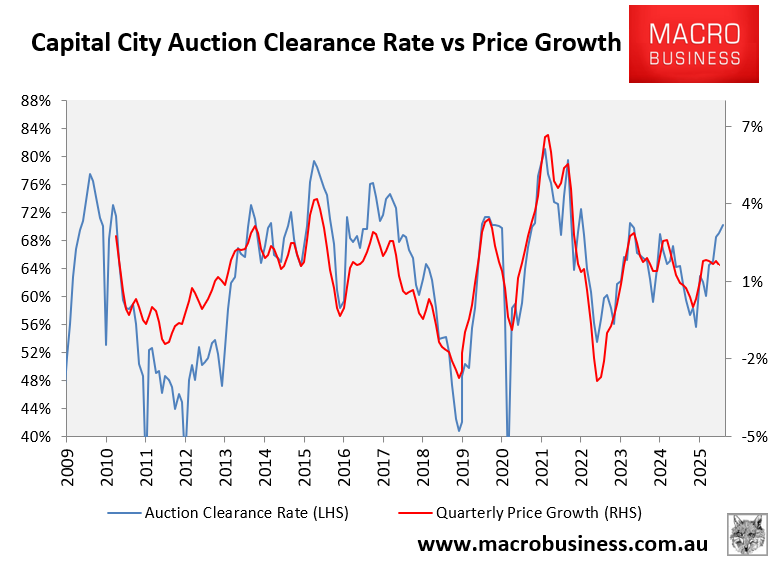
House price expectations are at their strongest level in 15 years.
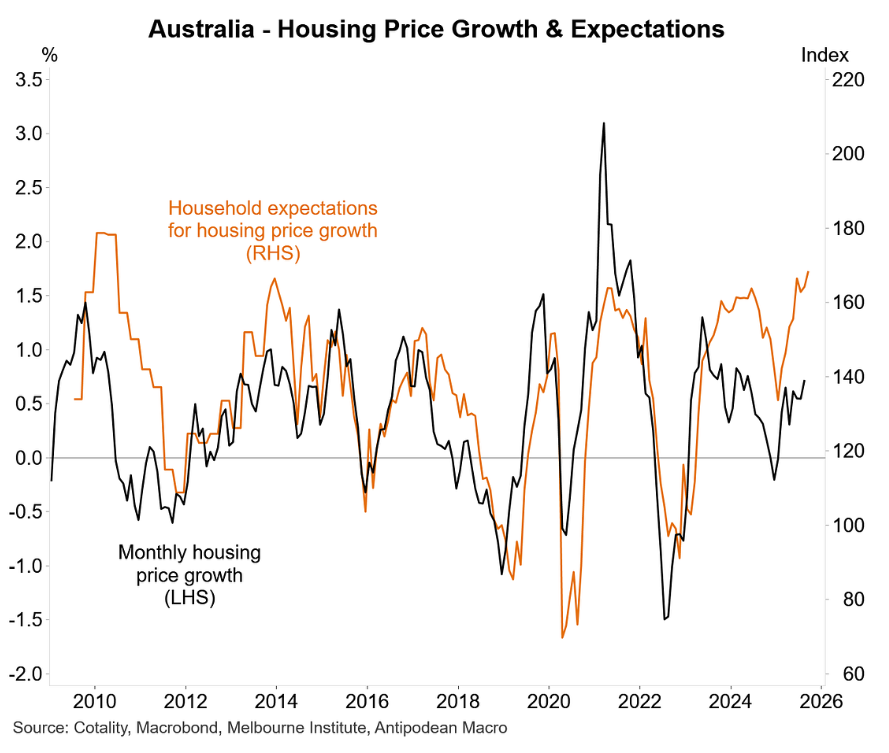
The Albanese government’s 5% deposit scheme for first home buyers also came into effect on Wednesday, which is certain to drive prices higher and increase the amount of mortgage debt carried by households.
This policy will intensify Australia’s housing boom by stimulating demand. Indeed, mortgage brokers and real estate agents have already reported strong interest from first-home buyers.
The policy will also leave future first home buyers vulnerable to negative equity in the event of a future major downturn and taxpayers on the hook for any potential mortgage defaults by users of the scheme.
Moreover, because the government will guarantee 15% of first home buyer mortgages, it incentivises the government to continue supporting house prices in the future.
Rents:
Things have gone from bad to worse for Australia’s long-suffering tenants.
A few months back, Cotality released its Quarterly Rental Review, which estimated that rents nationally had increased by $200 per week or 43% over the past five years, meaning that the median Australian tenant is now paying an extra $10,350 per year to rent the median home.
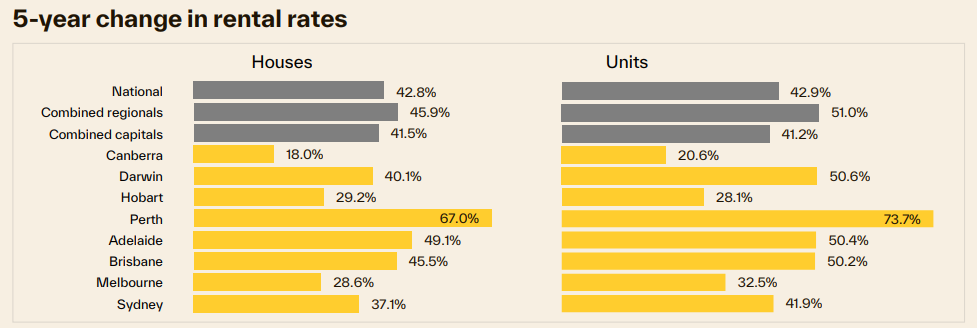
Source: Cotality
Cotality also estimated that the share of income spent on rents in Australia was at an all-time high, meaning rental affordability was the worst on record.
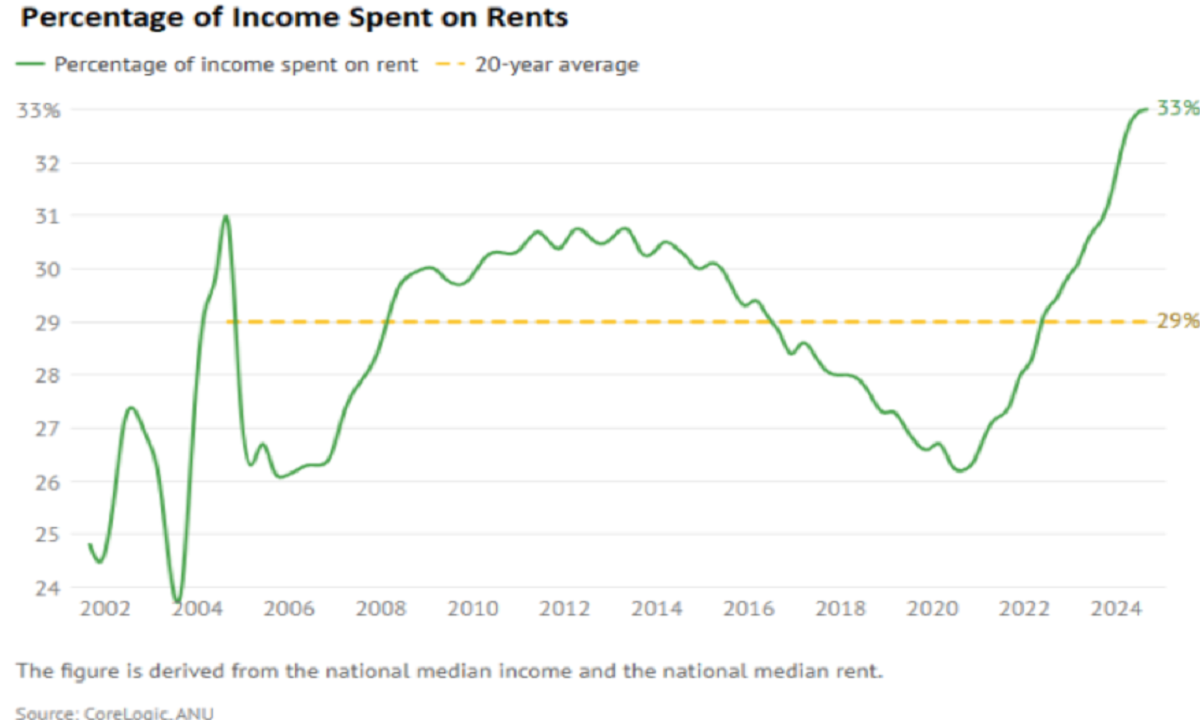
Cotality’s September housing report released on Wednesday showed that the nation’s rental vacancy rate has tightened to a record low of just 1.4%, which is around half its pre-pandemic level.
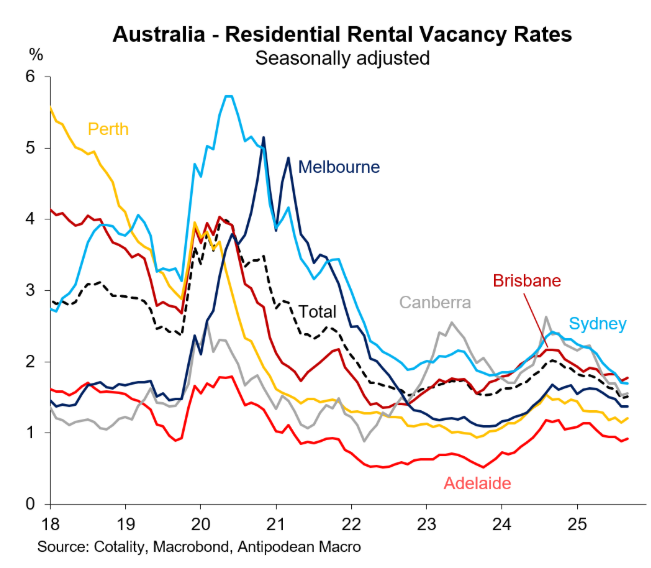
Advertised rents are also accelerating again.
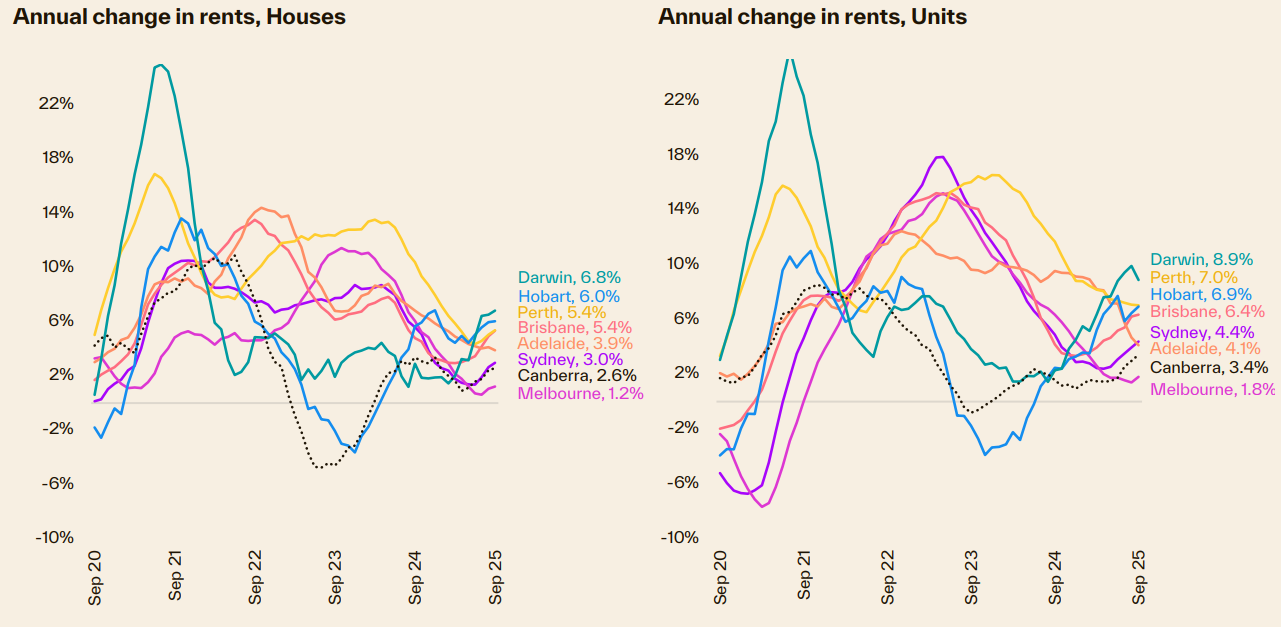
Source: Cotality
The total number of homes listed for rent has also fallen to a record low, down around 40% from the pre-pandemic level.
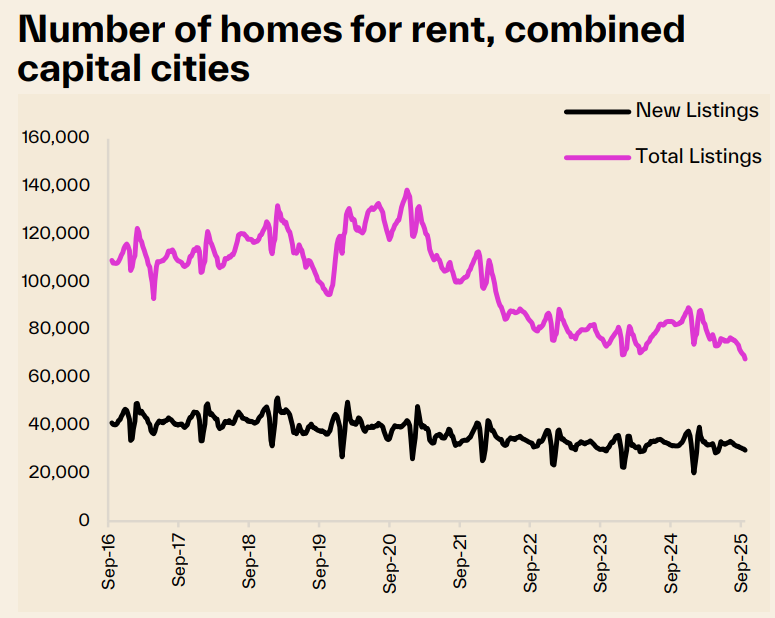
Source: Cotality
The collapse in rental vacancy rates appears to be driven by resurgent net overseas migration, as indicated by the monthly net permanent and long-term arrivals figures from the ABS, which posted a record increase in the first seven months of 2025.
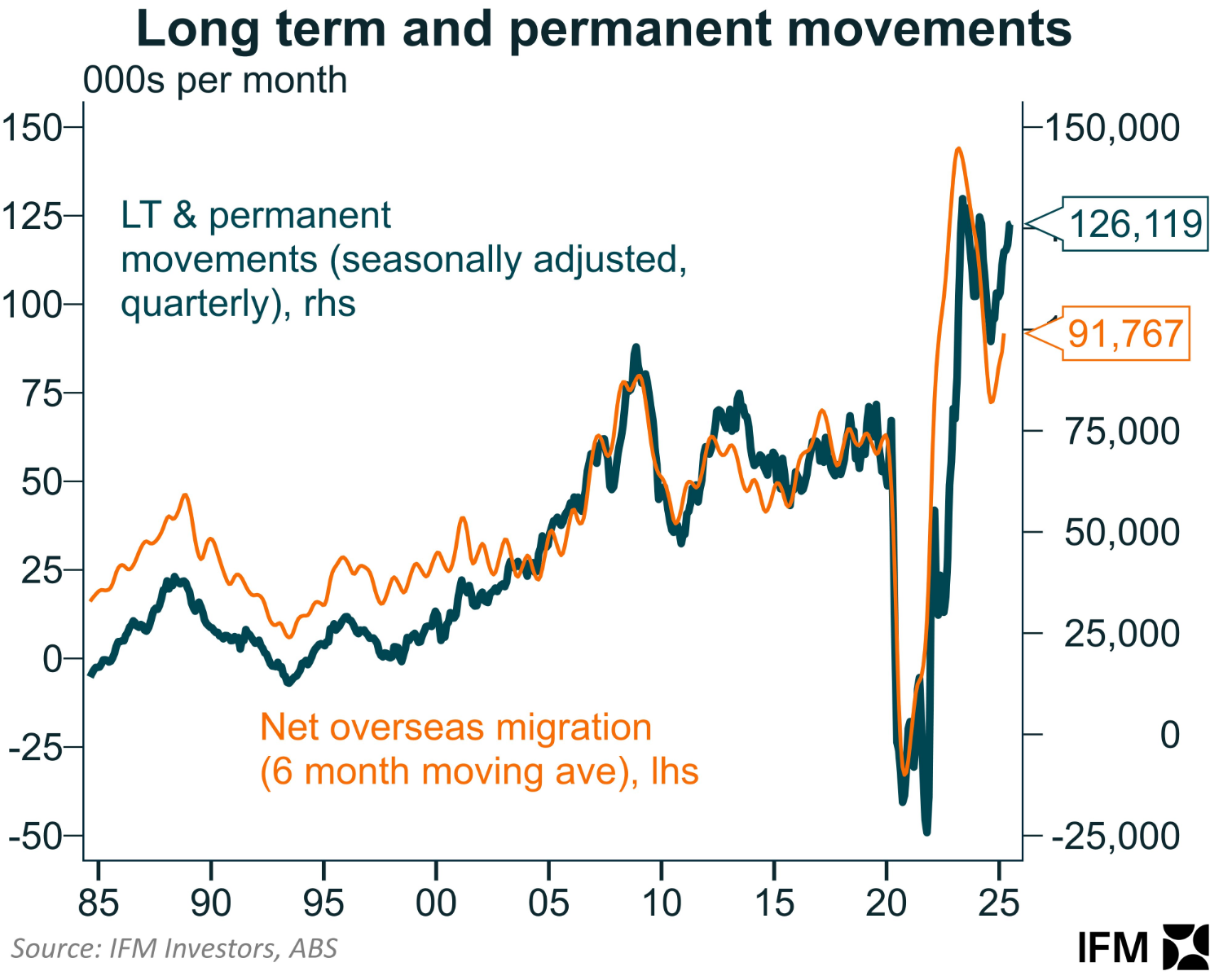
The longer-term outlook is poor given that the National Housing Supply and Affordability Council (NHSAC) has forecast that population growth will remain above new housing construction over the next five years, resulting in a deficit of 79,000 homes.
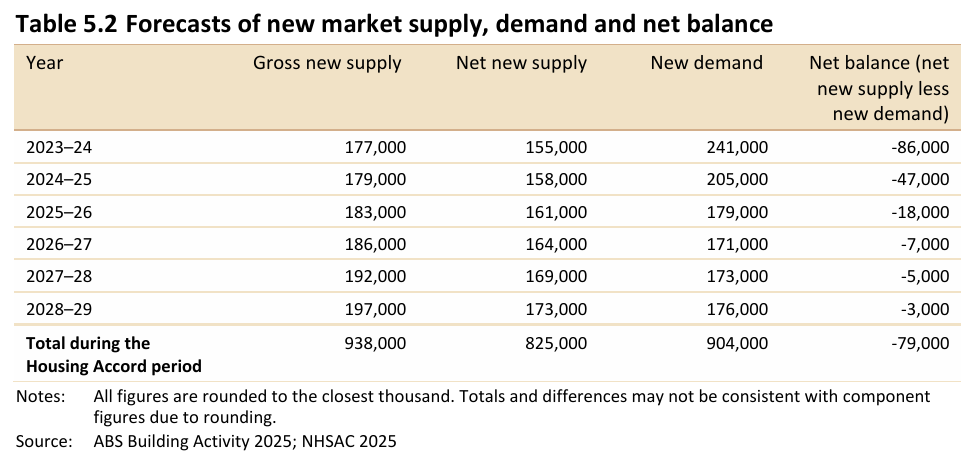
Property analytics firm CBRE also forecasts that the rental vacancy rate nationally will collapse to a new low of only 1.1% by 2030, driving rents significantly higher.
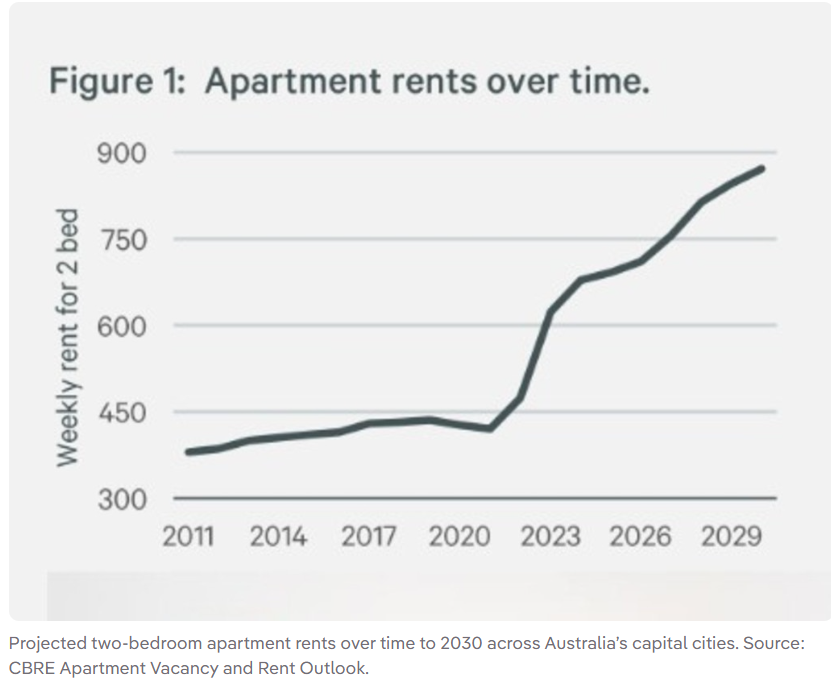
The upshot is that idiotic federal housing and immigration policies are set to drive up home prices and rents, making housing affordability even worse.
Prime Minister Anthony Albanese gaslights:
Last week, RBA governor Michele Bullock was asked about Australia’s housing crisis and whether she thought the supply situation would improve.
Bullock responded that Australia has a “structural shortage” of homes and said that housing supply is unlikely to improve for the next two years at least.
When asked about Bullock’s comments, Prime Minister Anthony Albanese responded by talking up the government’s housing achievements, boasting that 500,000 homes have been constructed since Labor came to office in June 2022.
Actually, the true number of homes built under the Albanese government is 486,000, but who’s counting?
Moreover, Albo conveniently forgot to mention that the population grew by 1.5 million over the same period, thanks to Labor’s mega migration.
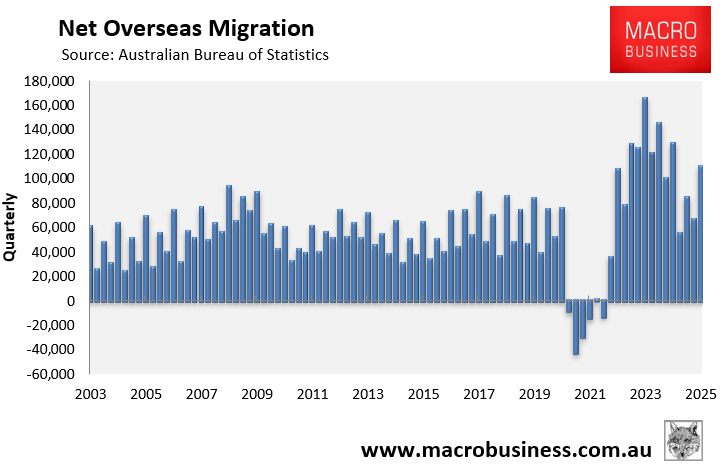
Labor has also chosen to increase immigration by expanding the planning level for international students by 25,000 for 2026 and watering down some English-language tests.
As long as Labor keeps pumping demand via immigration, the housing shortage and rental crisis will worsen.
I discussed these issues in this weekend’s Treasury of Common Sense on Radio 2GB/4BC.

